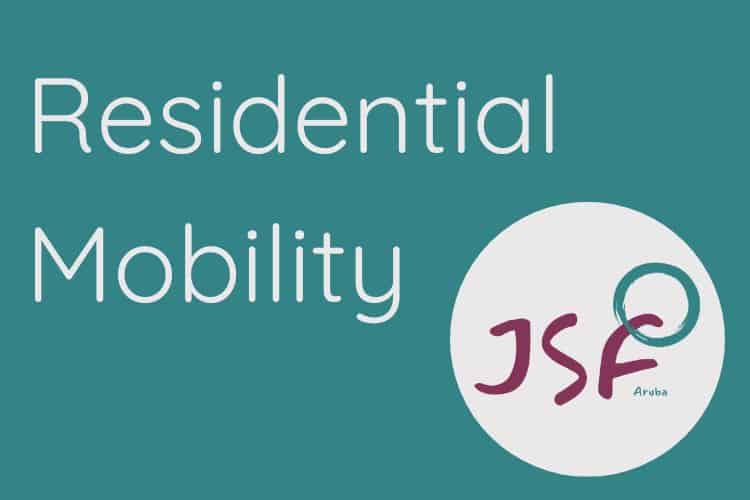
Residential mobility means frequently moving. Moving, buying or selling a house just once is stressful. If the move is forced, it can be traumatic. In some cases it may be an acute trauma.
Moving multiple times, because you’re selling up, because you’re moving out of your parents house, or start living together with a partner is a normal part of life. When those moves are part of your personal development, they can be beneficial.
When moves are forced though, they can be incredibly stressful, or even traumatic. Think of losing your home, because you can’t afford the rent or mortgage. Perhaps your house sustained structural damage due to a fire, or natural disaster. Or perhaps your relationship ended, and you’re forced to find a new place to live because you cannot afford your former home by yourself. Maybe your landlord had your property condemned, rather than pay for repairs. Maybe your housemate put all of your belongings out on the street after a disagreement about your living arrangements.
It could be that you have to move frequently because of your job. Think of military personnel, embassy personnel, personnel of large corporations with multiple offices. Sometimes it’s a question of that there are no economic opportunities in your area. So you move in order to have a greater chance of finding a job.
Childhood Residential Mobility
Having a safe, stable, nurturing environment to grow up in is essential for a child’s development. If that part is missing, it may be a covert trauma.
Moving during childhood is always forced. The younger you start moving, and the more often you move, the greater the chances are of developing mental health problems, even well into adulthood. Children as young as 7 months old can feel is something is stressful. From 12 months and older children can pick up on social cues, such as reactions from family members, and react emotionally or through their behavior to the events that cause the social cues.
If the safe, stable, nurturing environment is missing, it can lead to problems in a child’s development when it comes to things such as creating healthy attachments and developing essential skills such as protecting oneself and developing one’s identity. Childhood residential mobility also puts children at greater risk for maltreatment.
The effects on adults that have experienced childhood residential mobility can be devastating. Things such as depression, OCD, self-harm, addiction and suicide.
This article will be updated with further research and sources soon.
Sources
Moving during childhood linked to poor mental health
By Lisa Rapaport, Reuters Health
Lasting effects of residential mobility during childhood on psychopathology among Chinese University students
BMC Psychiatry volume 21, Article number: 45 (2021)
Abstract
Background
Residential mobility during childhood increases risk of psychopathology in adulthood and is a common experience among Chinese children. This study investigated associations between number and age of first move, etiological risk factors for psychopathology, and common mental disorders in adolescence and early adulthood.
Methods
The sample included 39,531 undergraduates (84.5% completion rate) age 15–34 years in their first year at a Chinese comprehensive university in annual cross-sectional surveys during 2014–2018. Common mental disorders measured using standardised self-report instruments. Data analysed using logistic regression models and interaction analysis.
Results
Half of all students experienced one or more moves of residence before age 15 years. Outcomes of Depression, Somatisation, Obsessive-compulsive disorder, Hallucinations and Delusions, and Suicide attempts showed dose-response relationships with increasing number of moves. Other etiological risk factors, including childhood disadvantage and maltreatment, showed similar dose response relationships but did not confound associations with mobility. We found interactions between reporting any move and being a left-behind child on depression and somatisation; number of moves and younger age at first move on depression, somatisation, suicide attempts and hallucinations and delusions.
Conclusions
Residential mobility in childhood is associated with psychopathology in adulthood and this association increases with increasing number of moves. Mobility is also associated with childhood disadvantage and maltreatment but associations with psychopathology are independent of these factors. Multiplicative effects were shown for multiple moves starting at a younger age and if the participant had been a left-behind child.
DEVELOPING THE COVERT TRAUMATIC EXPERIENCE SCALE (COTES): A RETROSPECTIVE EARLY PSYCHOSOCIAL TRAUMA ASSESSMENT TOOL
Tiffany E. Vastardis PhD, LMHC, CCTP, CMHIMP
Clinical Education Specialist • Florida Residential Clinical Training Liaison • Mental Health Researcher • Licensed Psychotherapist • Clinical Trauma Specialist • Integrative Medicine Practitioner
Childhood Residential Mobility
Childhood residential mobility, or early frequent geographic relocation, has been
linked to numerous adverse outcomes in adulthood. In an investigation of early middleaged outcomes relating to early frequent relocation, it was determined that residential
mobility, particularly within the later childhood and adolescent years, was linked to the
following severe outcomes: violent offending, attempted suicide, substance misuse, and
unnatural death. In this study, rates of relocation were positively correlated with increases
in age (Webb et al., 2016). An international study of adults in the same age range
generated similar results, wherein, the stress of such mobility during childhood was
determined to be an indicator of “psychosocial stress and vital exhaustion in the transition
to middle adulthood,” (Lin, Twisk, & Huang, 2012, p.469). An analysis of the link
between childhood residential mobility and the onset of psychopathology also indicated
that the rate and age of relocation was positively correlated with the onset of dysfunction.
For example, adolescent residential mobility, even when controlling for confounds, was
found to linked to myriad forms of psychological dysfunction. Hence, affected
individuals are left at a higher risk for the development of most mental health disorders,
with outstanding rates of Antisocial Personality Disorder and substance misuse prevalent
amongst these populations (Mok, Webb, Appleby, & Pedersen, 2016). Similarly, an
additional study evidenced links between frequent childhood relocation and the initiation
of substance use and onset of Substance Use Disorders (DeWit, 1998).

